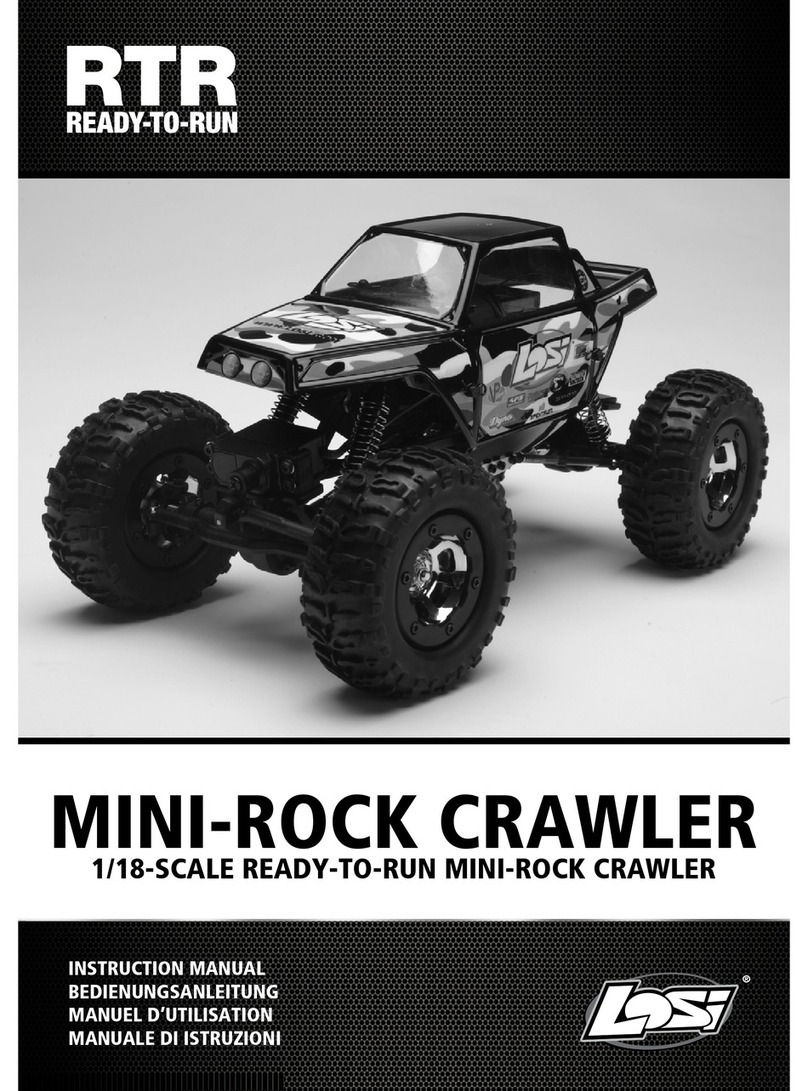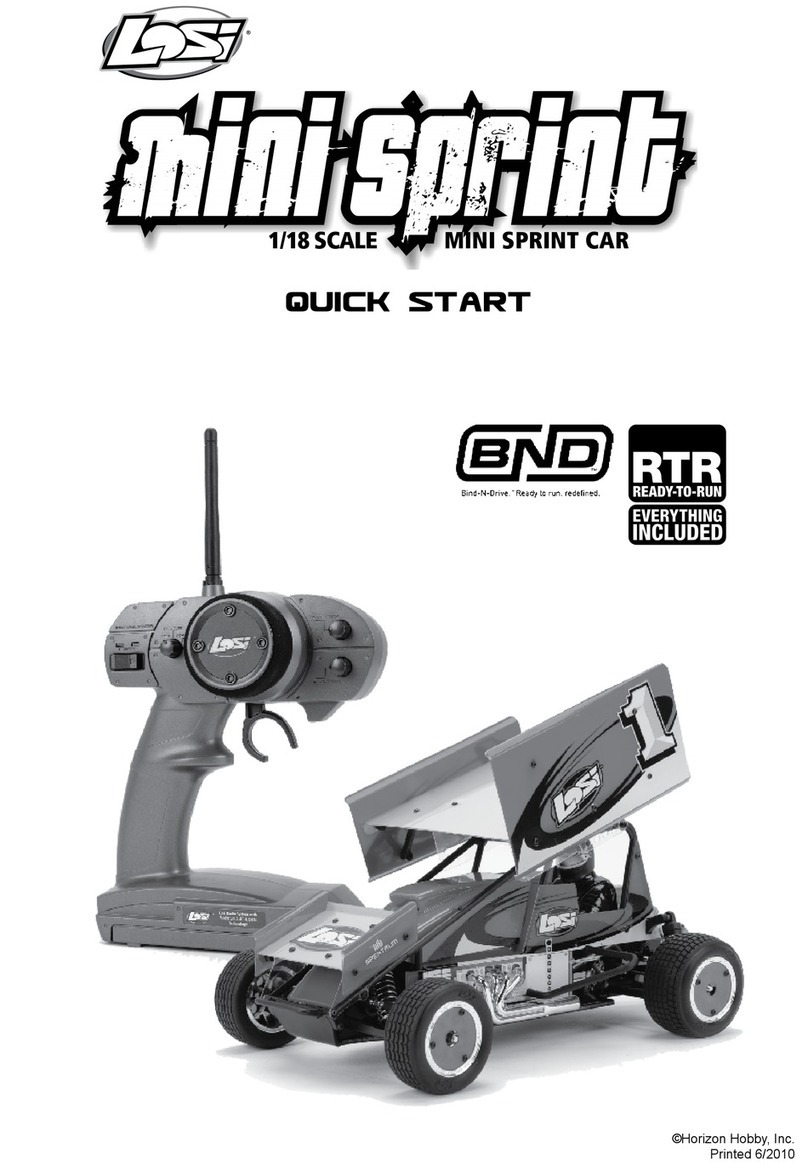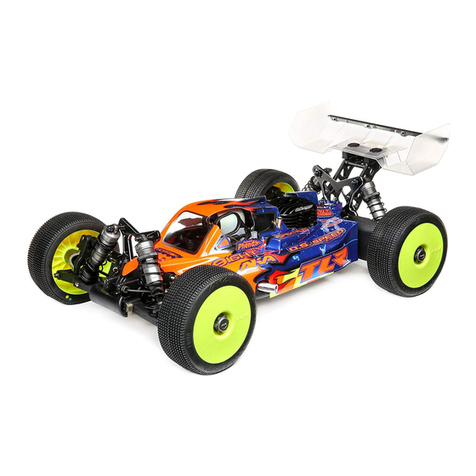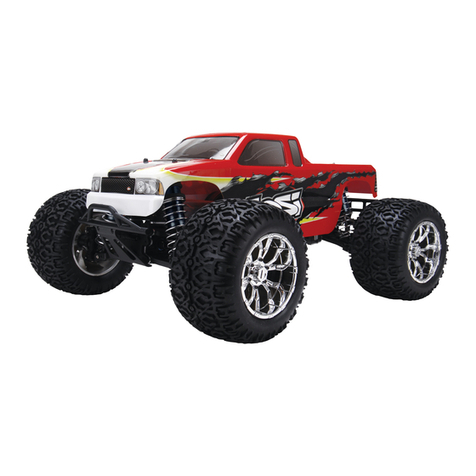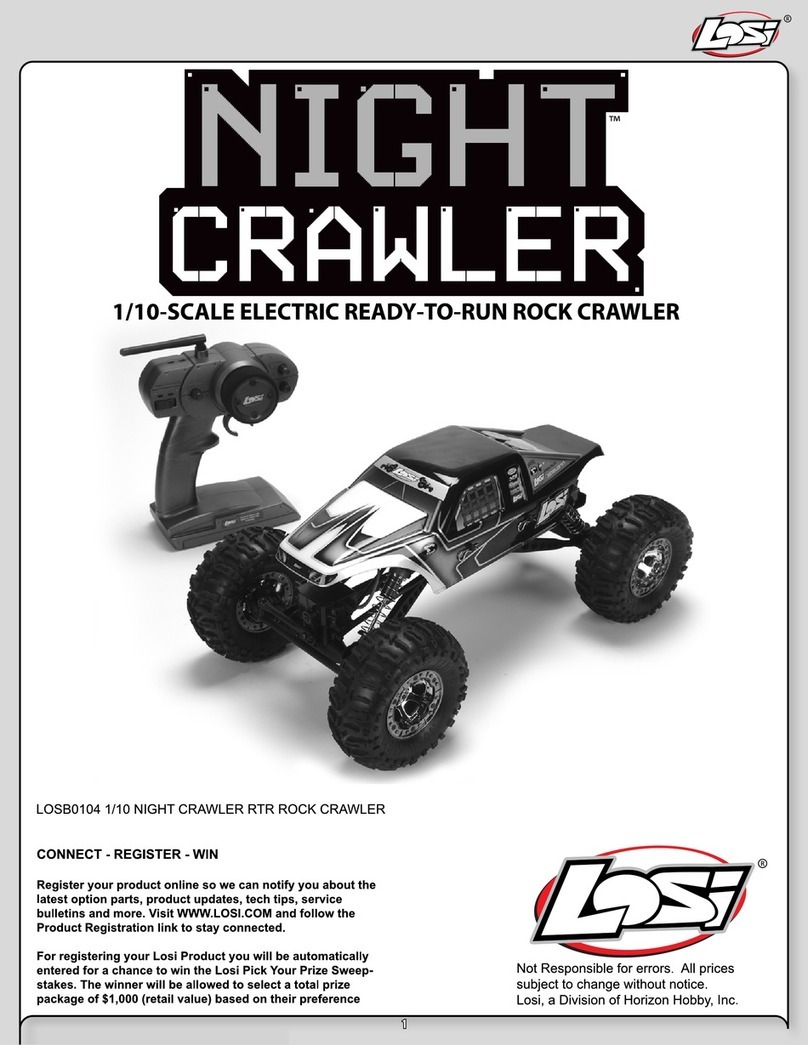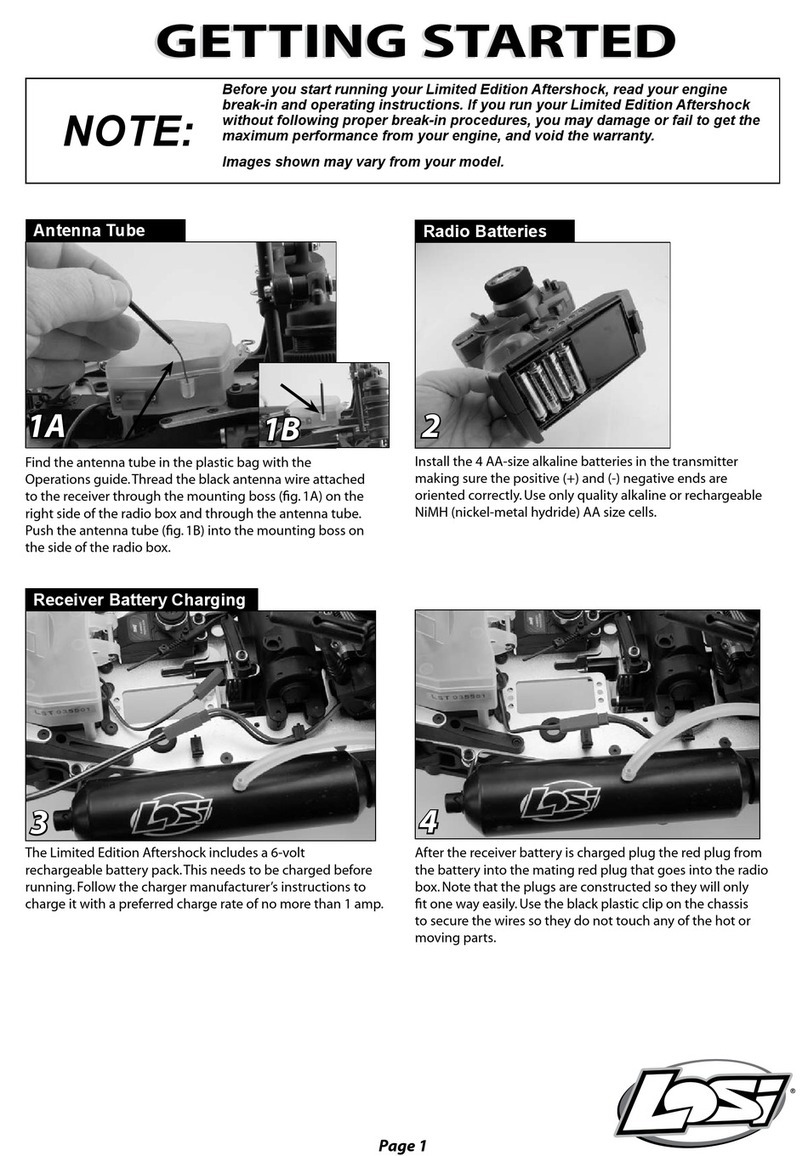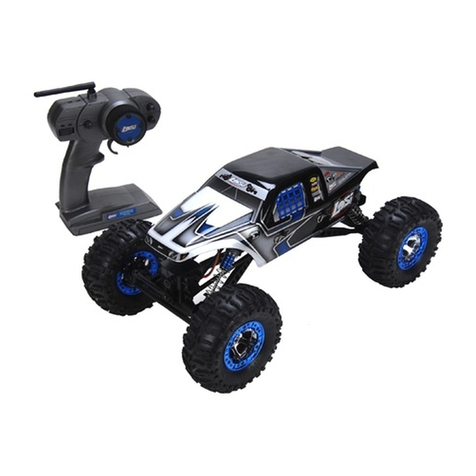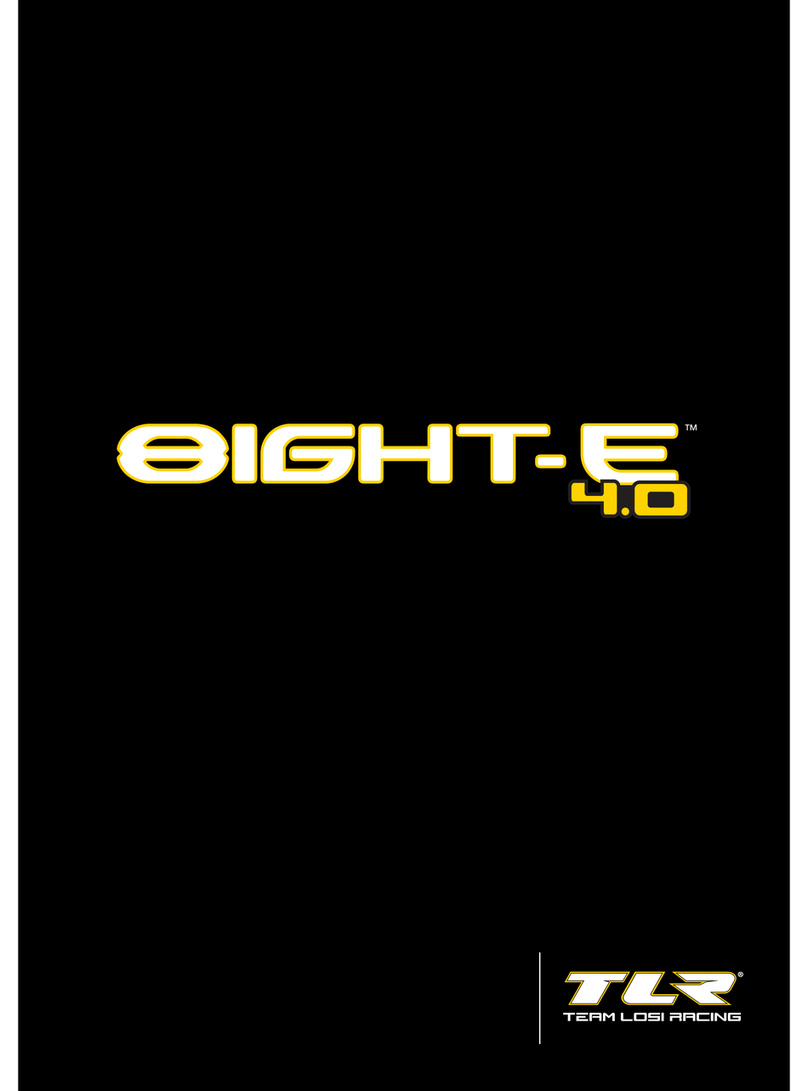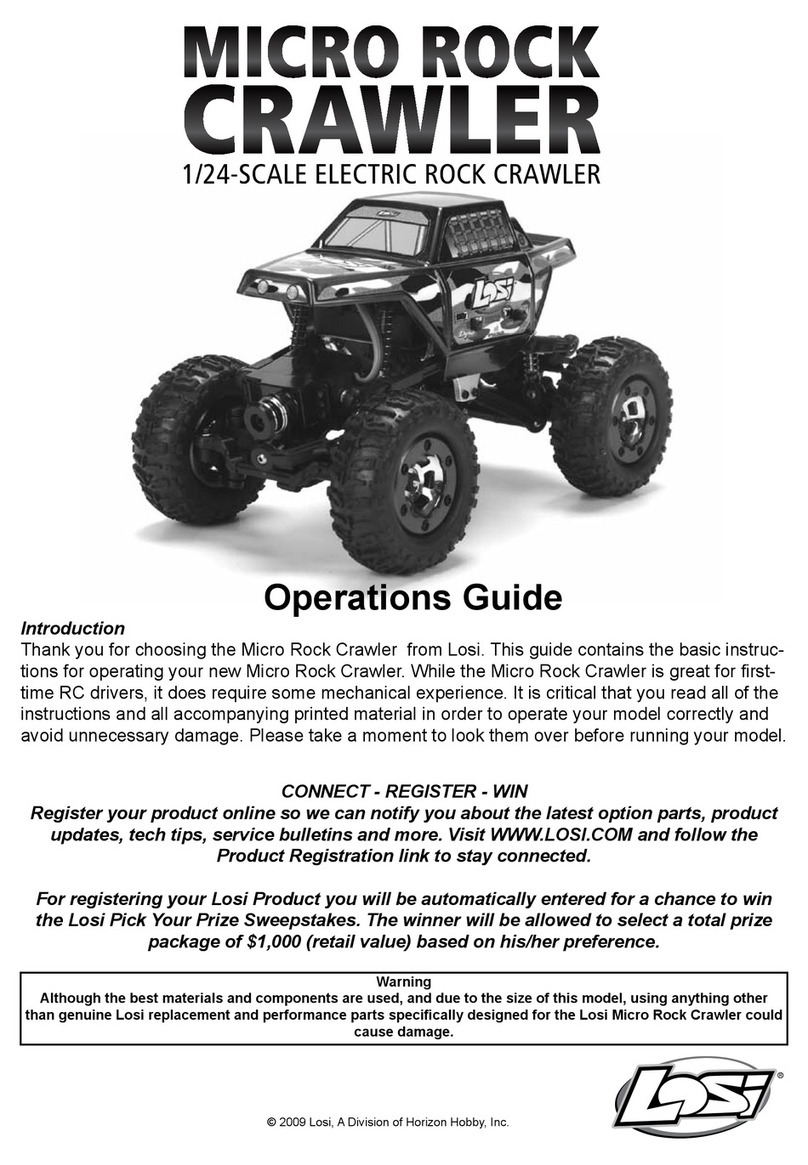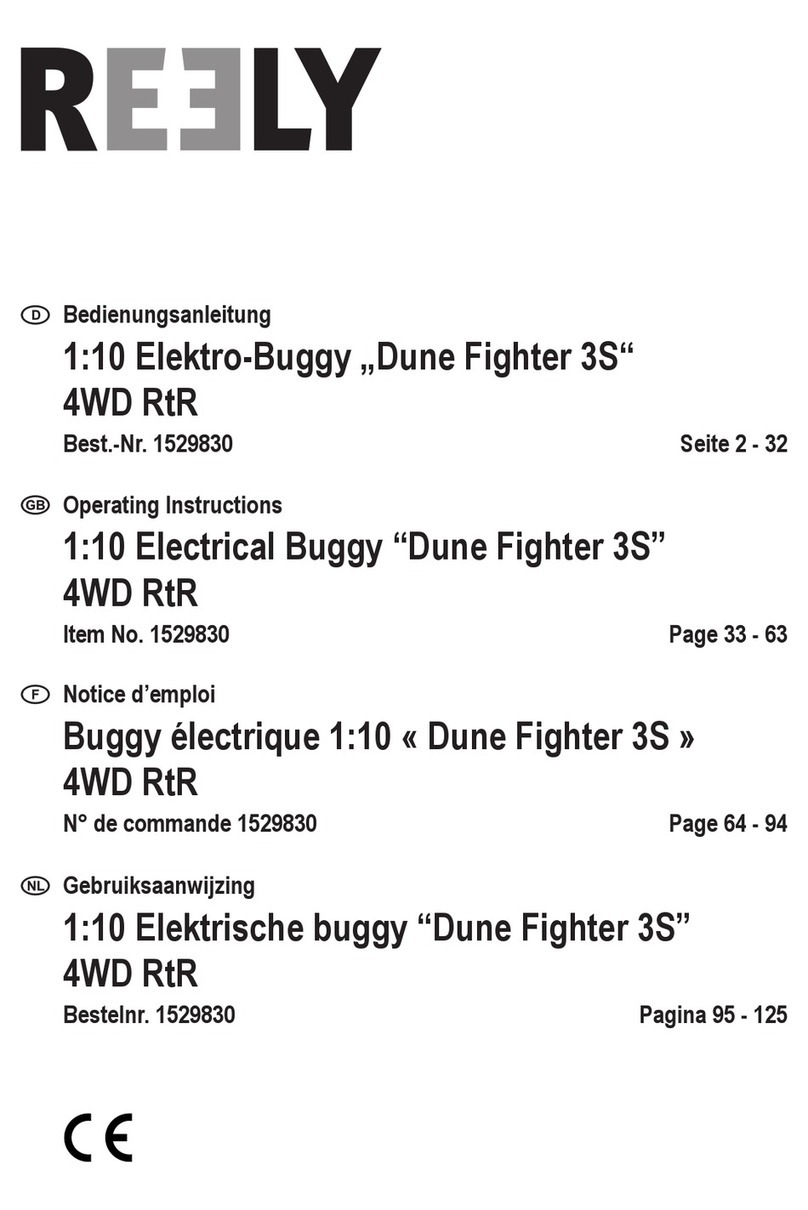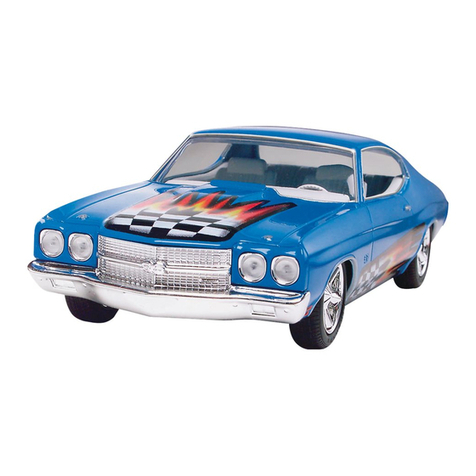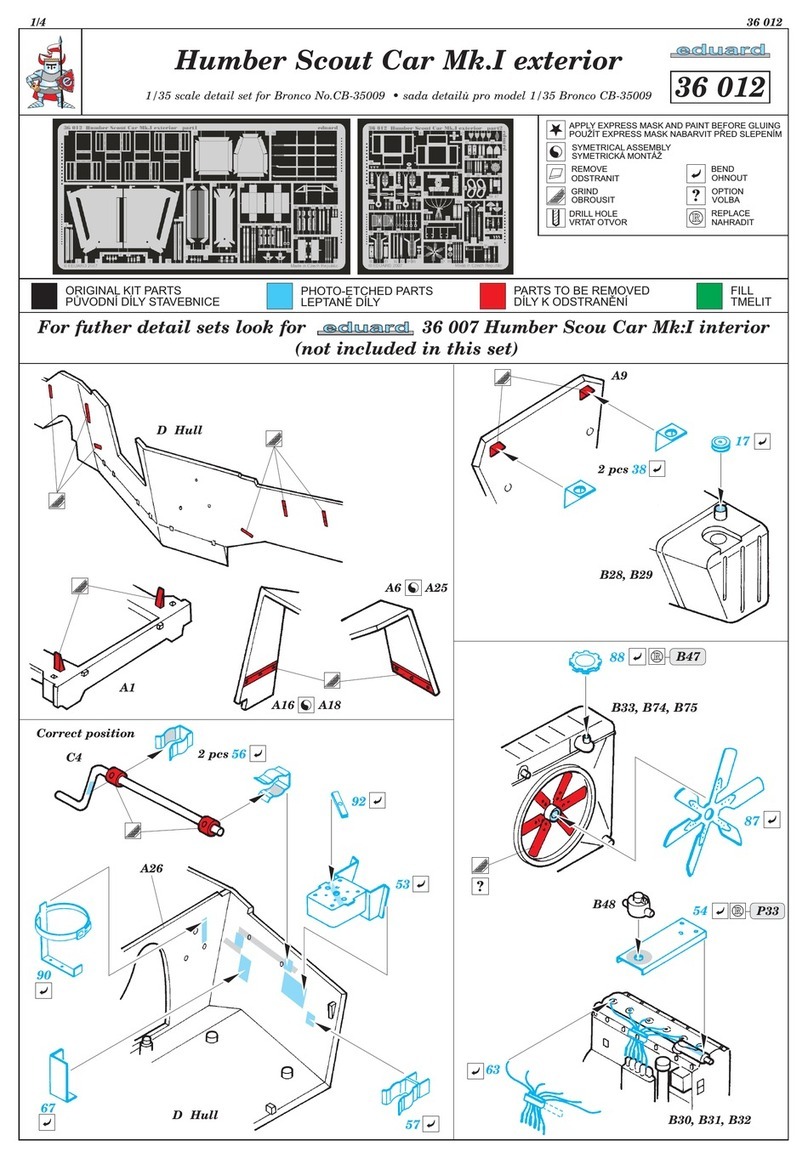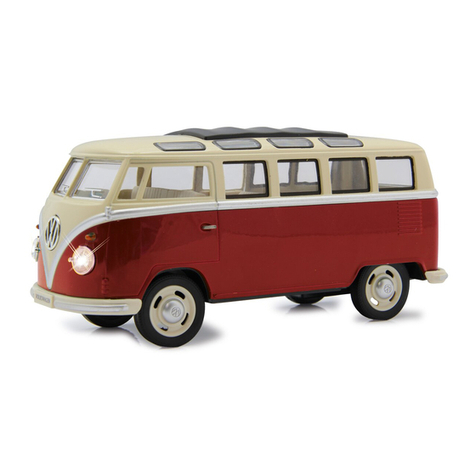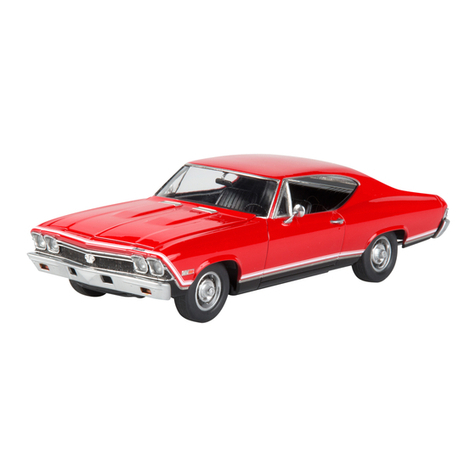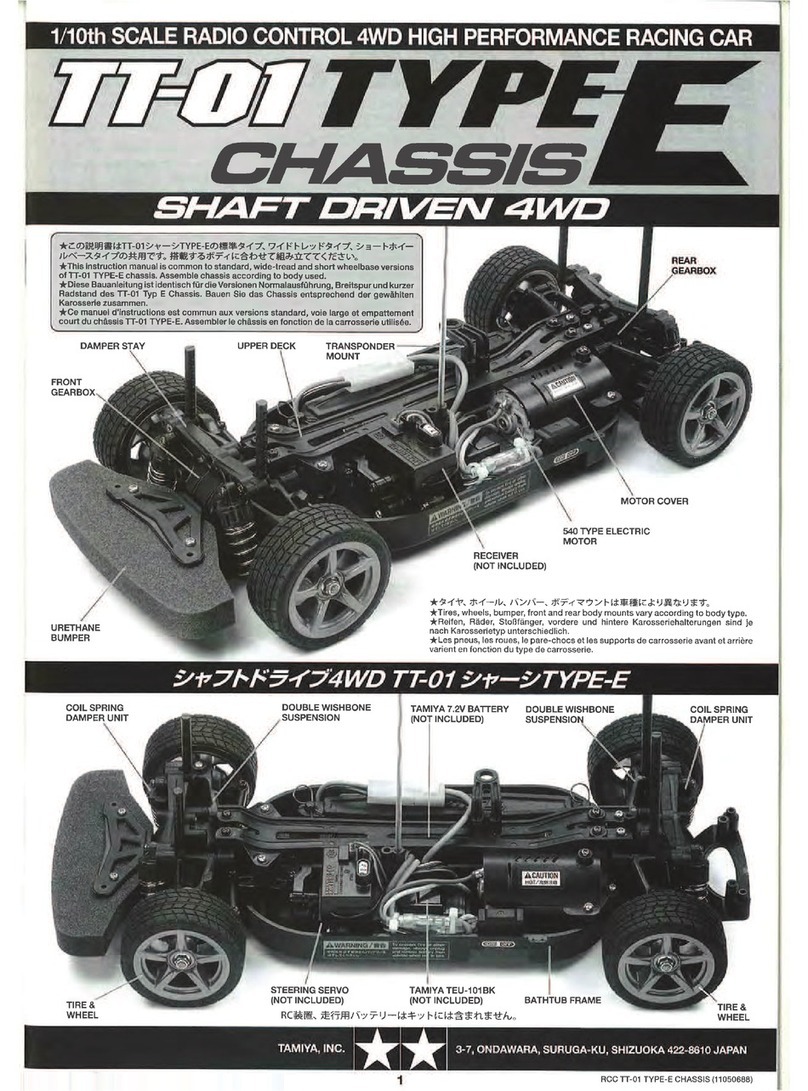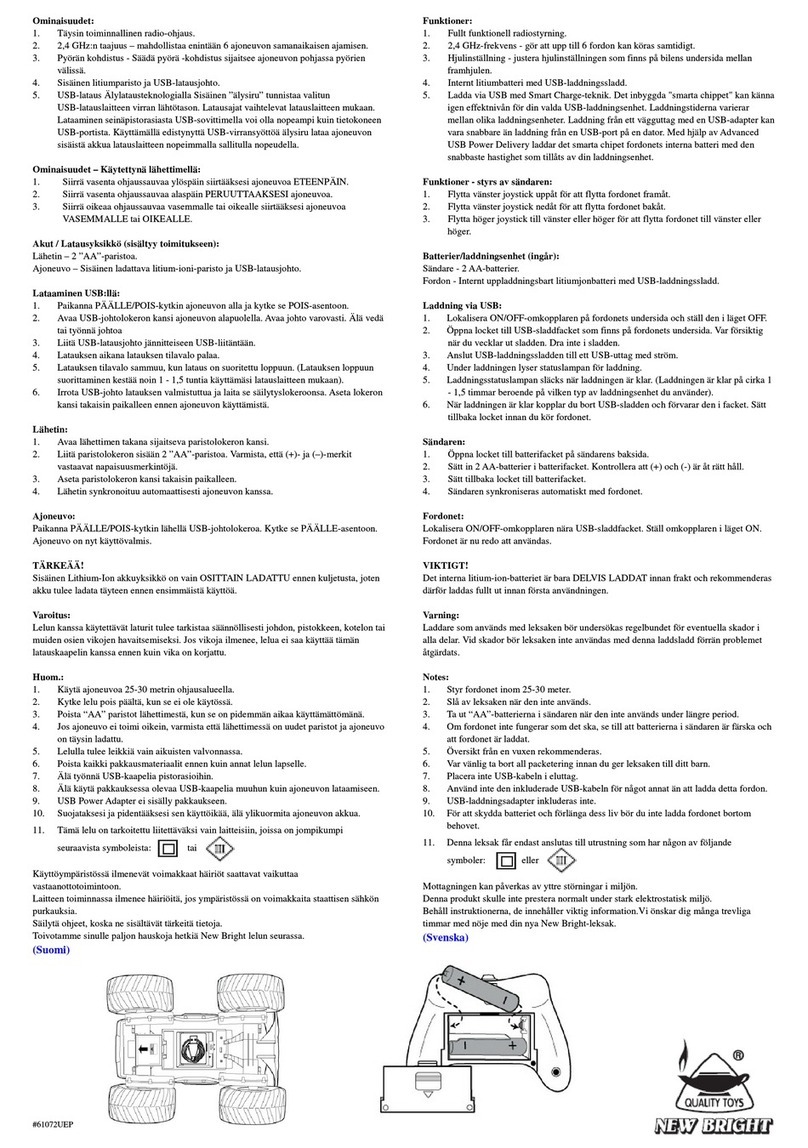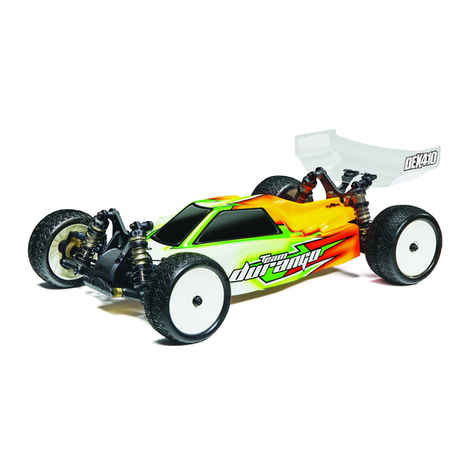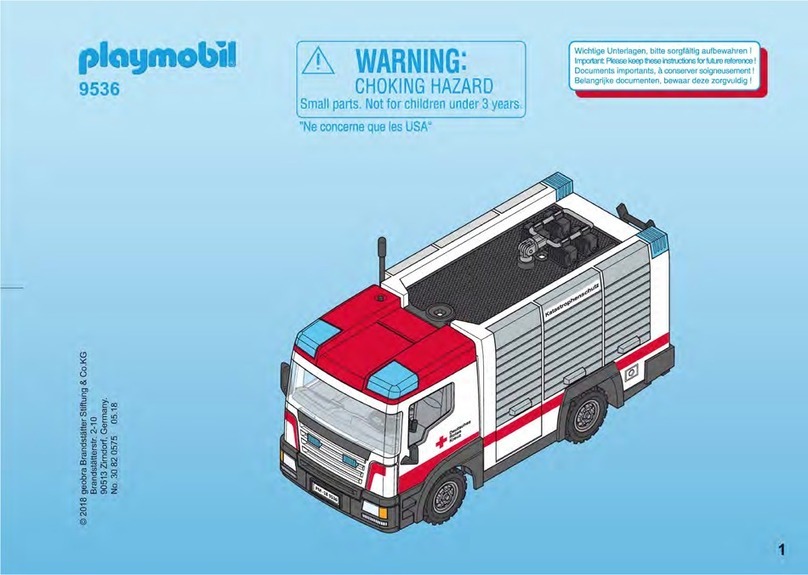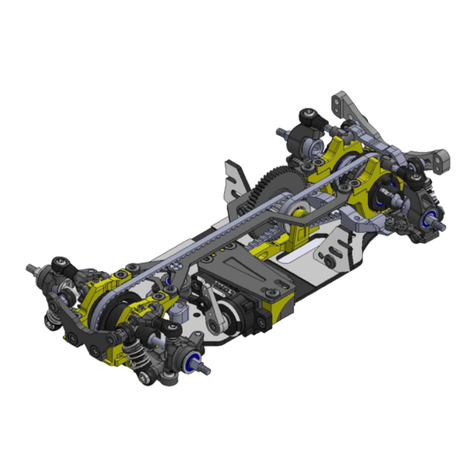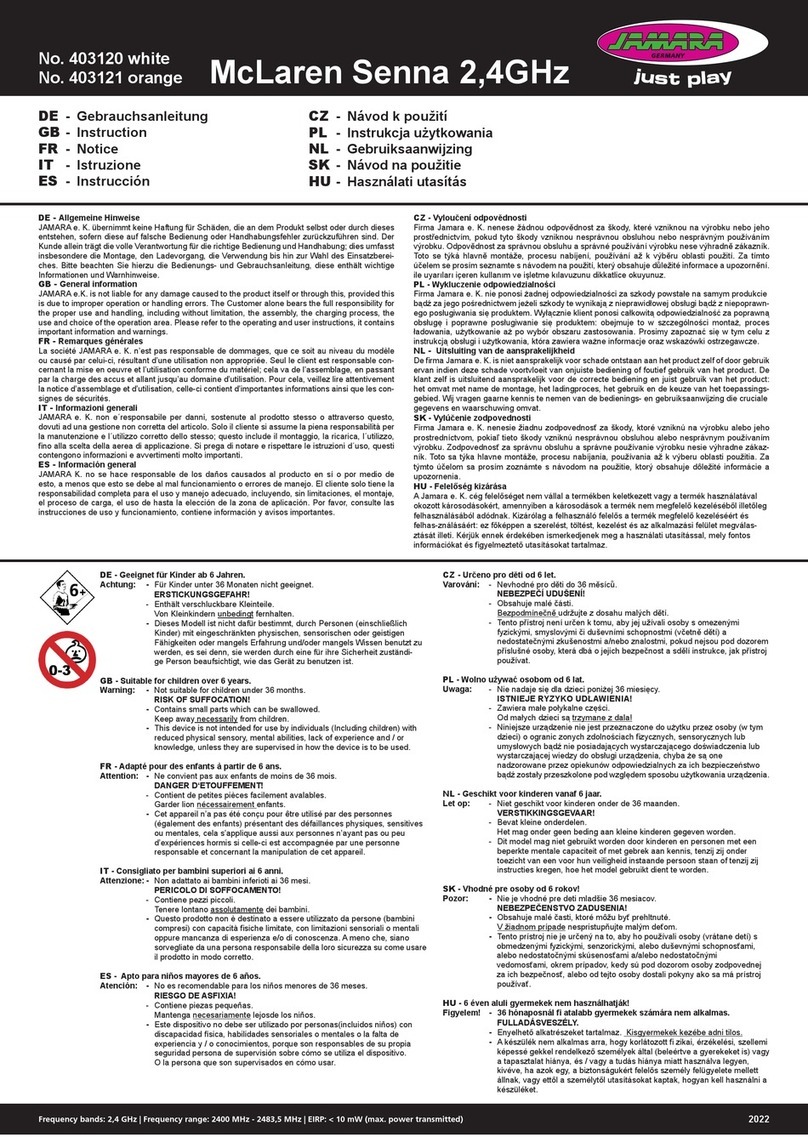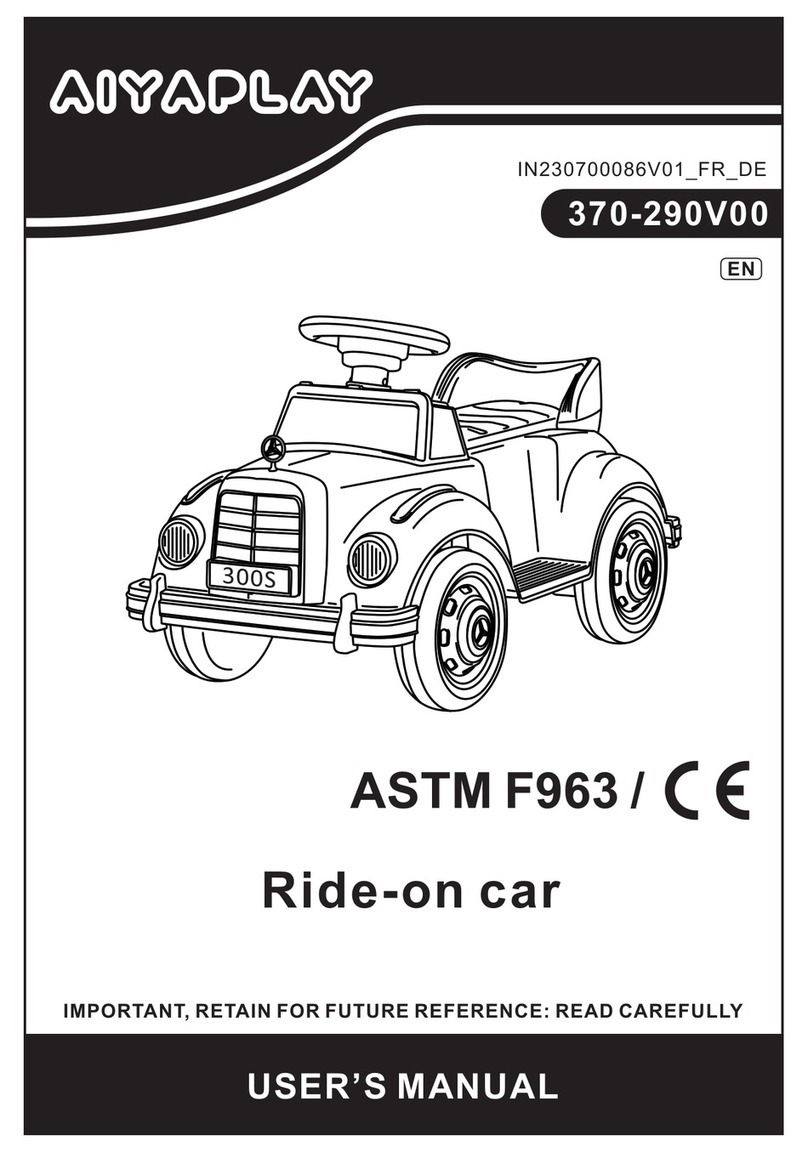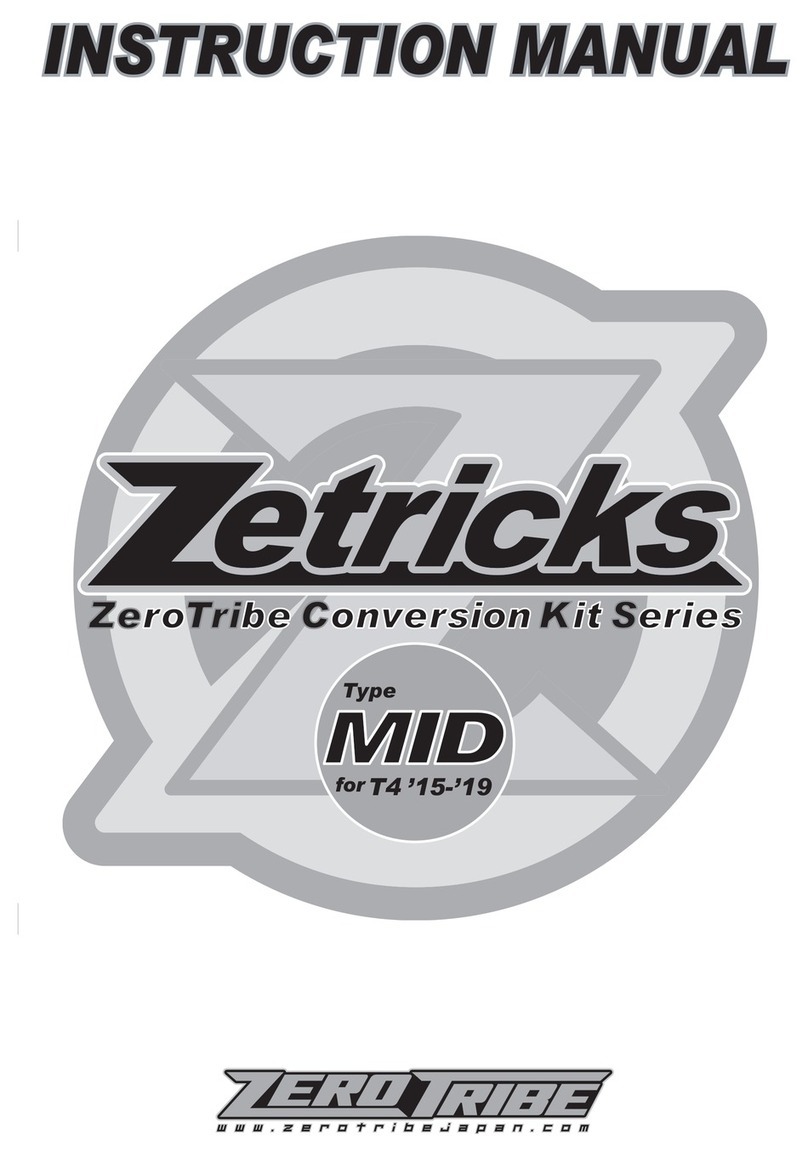
RADIO/ELECTRICAL
A suggested radio layout
is
provided
in
this manual. Your high performance R/C center should be consulted
specifics
on
radio/electrical equipment.
HARDWARE IDENTIFICATION
When
in
question, use the hardware identification guide in each step. For screws, the prefix
number
designates the
screw size and
number
of
threads per inch (i.e. 4-40
is
#4
screw with 40 threads per inch
of
length). The fraction following
designates the length
of
the threads for caphead screws,
and
the overall length for flathead screws. Bearings
and
bushings
are referenced
by
the
inside diameter x outside diameter. Shafts
and
pins are diameter x length. Washers are described by
inside diameter
or
the
screw
size that will pass through the inside diameter. 'E' clips are sized by the shaft diameter that they
are attached to.
MOTORS AND GEARING
Your Double-XT truck includes
an
88 tooth, 48 pitch
spur
gear. The overall internal gearbox ratio is 2.61 :1. The external
pinion
gear
will determine
your
gear
ratio.
To
figure
out
thefinal drive ratio first dividethe
spur
gear
size bythe pinion gearsize.
Say you are using a
20
tooth pinion gear, you would divide
88
(spur
gear
size)
by
20 (pinion
gear
size). For example:
(88 +
20
=4.4)
So
4.4
is
your
external drive ratio. Now multiply the internal drive ratio (2.61) by the external drive ratio (4.4).
Forexample: (2.61 x
4.4
=
11.484)
This tells you that by using a
20
tooth pinion
and
a 88 tooth
spur
gear
, the final drive ratio
is 11.484:1.
Consult
your
high performance
shop
for recommendations to suit
your
racing style
and
class. Thechart below lists some
of
the more common motor types
and
a recommended initial gearing for that motor. Ratios can be adjusted depending
on
various track layouts, tire sizes,
and
battery types. q:j1
"i
1.
~
:
REC
OM
MENDED INITIAL
GEA
RING FOR
CO
M
MO
N MOTORS f '
~
\
PINION
Sf
•·
f'
ifO
SPUR
22
1/J
. " ( 88
{0
I
Lftf
21
II
. tfl 88
(0
.Ct1l
16
r-1
.
tt&
88
Jtf,)))
12 turn modified 17
r~
.
s t 88
J1
.
51
0
13 turn modified 18 }1
cS
88
(1..1'5"'1
14
turn modified 19 I
z.
.1/.p 88
1
z..o
S
~
15 turn modified
20
,,,
74
88 ; 1,4kc/
16 turn modified
21
It
.
IY
88
,o
.
Cfn
17
turn modified
22
/O .
Y,(
88 I
o,
4
lf
18 turn modified
i~
I
IJ
,
7..1
~~
q ,
&)?;{.,
'1
:
71
TABLE OF CONTENTS
~
.
5<t
't
1.
INTRODUCTION ...............
..
....................
..
...... i 3. BAG B ............................................
..
...
.................
..
5-10
Completed Kit Dimensions
..
....
..
..
..
............
...
i 4. BAG C ..................................................................
11
-15
Notes & Symbols ........................................... i 5. BAG D ................................................................. 16-
21
Kit Manual Organization
..
...................
....
....
..
6. BAG E
...
..
.
..
.........
...
..
...
..
...
..
...
..
....
..
..
...
..
.
...
.....
..
.
...
22-26
Important Safety Notes ...............................
..
7. BAG F ........
...
..
.......................
..
......
..
....
..
.
..
..........
27
-30
Tools Required .............................................. 8. BAG G
..
..
.........
..
..
........................
..
...........................
31
Radio/Electrical ...
..
..
..
..
...
..
..
.
..
......
.....
..
......
..
..
ii
9. BAG H ...................................................
..
............ 32-34
Hardware Identification .
..
...
....
..
.................
..
.
ii
10. Glossary........................
..
....................................... 35
Motors & Gearing .
....
..
............
..
..
..
..
..
....
.
..
..
..
.
ii
11. Team Tips
....
..
..
..
..
.
..
.
...
.................
..
................... 36-37
2.
BAGA
..
...............
....
..
..
................................ 1-4 12. Spare parts .......................................................
38
-40
Team L
osi
Is
continually
changing
and
Improving
designs; therefore, the
actual
part
may
appear
slightly
different
than the Illustrated part. Illustrations
of
parts
and
assemblies
may
be
slightly
distorted
to
enhance
pertinent
details.
ii



